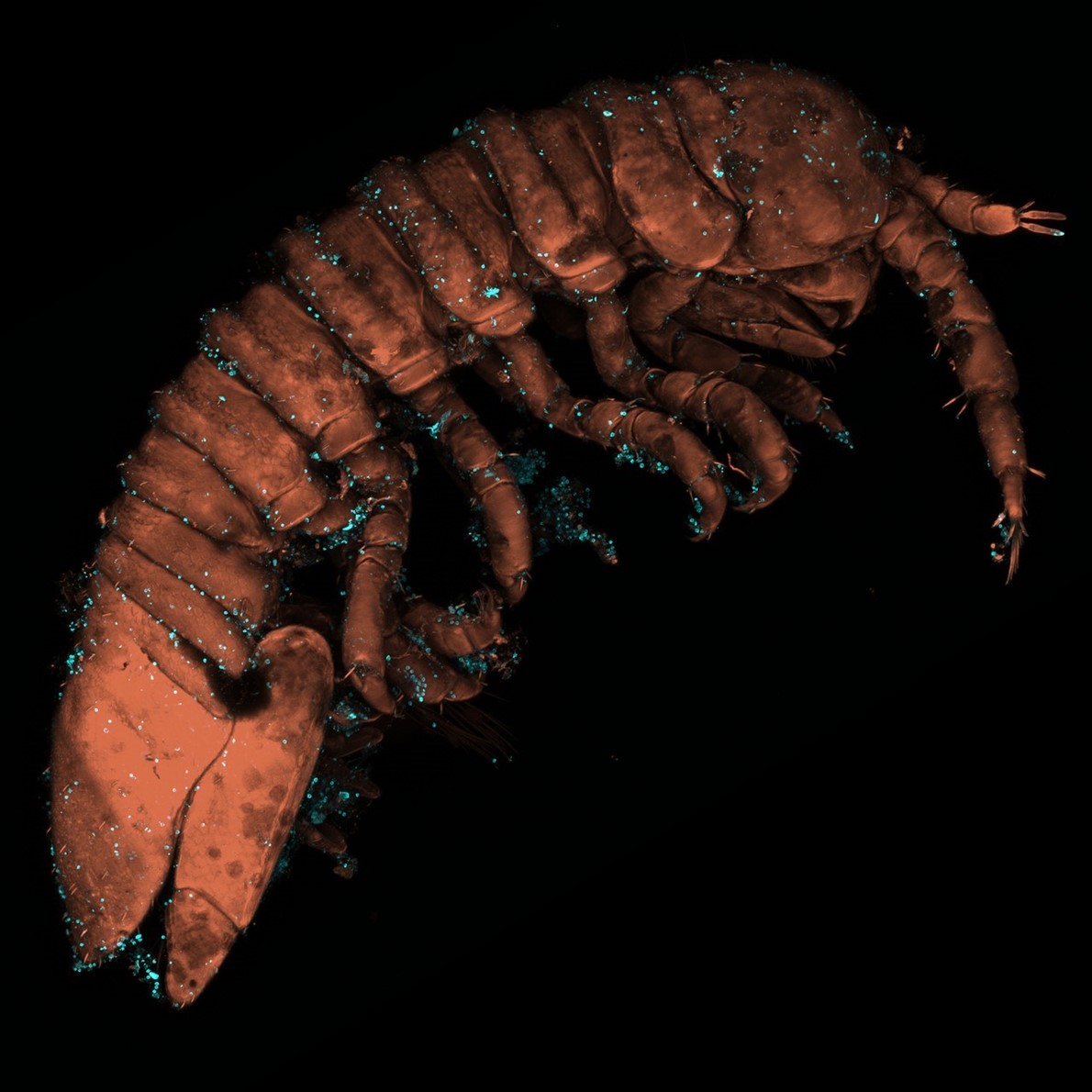Move over, birds and bees. There is another pollinator on planet
Earth, and
it lives in the sea.
اضافة اعلان
In a study published late last month in the journal
Science, scientists found that a tiny crustacean, Idotea balthica, plays the
role of pollinator for a species of seaweed. They do this by inadvertently
collecting the algae’s sticky spermatia, its equivalent of pollen, on their bodies
and sprinkling it around as they move from frond to frond in search of food and
shelter.
This is the first time an animal has been observed
fertilizing algae. This discovery not only extends the scope of species that
use this reproductive strategy, but it also raises questions about whether it
first evolved on land or in the sea.
It was long thought that animals only pollinated
plants on land. However, in 2016 scientists discovered that zooplankton
pollinate Thalassia testudinum, a seagrass species found in the Caribbean.
Seagrasses are the only flowering plants that grow in marine environments but
remain closely related to terrestrial plants. Seaweed, on the other hand, while
technically plants, are not closely related to terrestrial plants.

The discovery that Thalassia testudinum was
pollinated by animals was made after scientists noticed an unusually high
density of marine invertebrates visiting seagrass flowers. Shortly after this
discovery, Myriam Valero, a population geneticist at Sorbonne University in
France, observed something similar happening among the red algae she was
studying.
The seaweed species she was studying, Gracilaria
gracilis, always seemed popular with invertebrates, specifically the isopod
species Idotea balthica. Because Gracilaria gracilis produce spermatia that,
like pollen grains, cannot move on their own, Valero wondered if the isopods
might be playing a role in the spermatia’s dispersal. Earlier studies suggested
that the spermatia of Gracilaria gracilis were dispersed by ocean currents, but
given their abundance in calm coastal rock pools, Valero suspected that another
dispersal mechanism was at play.
To test her hypothesis, Valero and Emma Lavaut, a
graduate student at Sorbonne, grew male and female Gracilaria gracilis and placed
them around 15cm apart in seawater tanks. Half the tanks were populated with
the tiny crustaceans, and half were not. At the end of their experiment, they
found that fertilization occurred around 20 times as much in the tanks with the
isopods than in the tanks without them.
In a subsequent experiment, the researchers took
crustaceans that had spent time in tanks with reproductive male Gracilaria
gracilis and transferred them to tanks with unfertilized female algae. They
found that doing so also resulted in high rates of fertilization. They examined
the isopods under a microscope and found that they had spermatia stuck to
nearly every part of their bodies.
The researchers believe that the isopods have a
mutualistic relationship with the seaweed. The algae provide the isopods with
food in the form of a species of microalgae that grow on their surface as well
as shelter. In exchange, the isopods help fertilize the algae.
“This is such a profoundly fascinating study that
really shakes up our understanding of how seaweeds reproduce,” said Jeff
Ollerton, a visiting professor at the Kunming Institute of Botany in
China who
was not involved with the study but co-wrote a perspective article that
accompanied the study in Science. “This type of interaction may have been going
on long before plants ever evolved, and using a third party for reproduction
may have much deeper roots than we ever realized — if you’ll excuse the pun.”
The group to which the Gracilaria gracilis belongs
is thought to have evolved around 500 million years before the first plants
appeared on land. Although isopods only hit the scene 300 million years ago, it
is possible that before their arrival, there were red seaweed that relied on
some other now-extinct marine invertebrates to “pollinate” them.
“It may be possible that the relationship between
seaweed and animals predates the evolution of the animal-plant relationship,”
Valero said.
Another possibility, she said, is that
animal-mediated fertilization strategies evolved independently and repeatedly
in the terrestrial and marine environment.
Valero added that it is important to find out
whether other red algae species rely on marine animals for fertilization
because it could be critical to the maintenance of biodiversity in our oceans.
While scientists are documenting how pollution and climate change affect the
relationship between plants and pollinators on land, we have no idea how these
forces affect the relationship between algae and their “pollinators” in the
ocean.
In the coming years, Valero hopes to be one of the
scientists to figure this out.
Read more Odd and Bizarre
Jordan News



